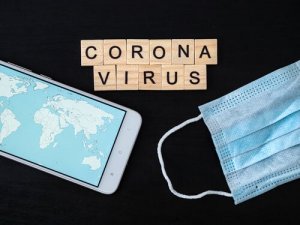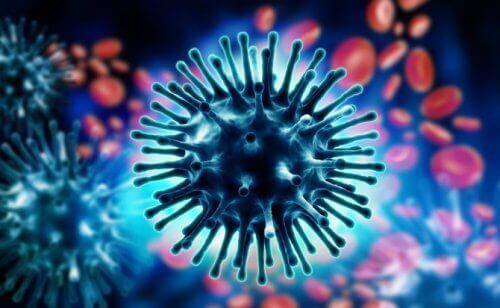Coronavirus Disease (COVID-19) Symptoms


Written and verified by the doctor Leonardo Biolatto
As you’ve probably heard on the news for weeks, the cases of people with coronavirus disease symptoms worldwide are on the rise. The prevention measures are becoming progressively become more restrictive. Also, the protocols are being applied immediately to anyone suspected of infection.
The most extreme case is that of Italy. The government of this country ordered a generalized quarantine with limited movement of its citizens and a ban on the entry and exit at the borders. Of course, the economy suffered a slight recession due to this activity decline. In fact, the global crisis is now affecting most of the world’s stock markets and currencies.
The national and local health ministries are currently developing action guides for their health teams and for informing the population. The protocol is mandatory in some places and there’s even police intervention in some instances. Other countries merely suggest that their citizens quarantine themselves if they consider themselves at risk.
What’s clear is that, in times of globalization, no region of the planet is out of reach. The epidemic spread due to the ease in traveling and the population exchange that’s currently the norm.
Similarly, there’s a lot of misinformation about the COVID-19 shared through the social networks. The World Health Organization (WHO) had to publish a document with advice for the population in regard to the myths and facts of this new coronavirus.
What is the coronavirus disease?
Before delving into the real symptoms of coronavirus infection, you must remember what we mean when we talk about this microorganism. Knowledge is the basis for preventing and detecting it.
Coronaviruses are a family of viruses that have been around for a long time. The generic designation by which we refer to the current outbreak is misleading because this particular strain has a name.
Since January 7, 2020, we know that the new variety of coronavirus currently on the rise is 2019-nCoV, later renamed COVID-19. This is the strain that began to be contagious in humans at the end of 2019 in the city of Wuhan, China.
There have been three major outbreaks of human-transmitted coronavirus worldwide, including this one. The most recent one that you’ll recall is Severe Acute Respiratory Syndrome (SARS).
Coronaviruses have relatively well-documented transmission between animals. What happened now is that a strain mutated and spread to humans. That is, it expanded beyond a specific case and became an epidemic.

Read on: Surprising Things You Probably Didn’t Know about Infectious Mononucleosis
How is coronavirus disease transmitted?
The route of transmission of COVID-19 is usually through contact with body fluids such as those from the nose or mouth of infected individuals. The virus is airborne. That is, it travels through the air when people expel infected fluids when they cough or sneeze. Then, they penetrate a receptor when they inhale said fluids.
These fluids can remain on certain surfaces and the virus stays active for a while. If, during that period, a non-infected person comes into contact with these fluids and then touches any of their mucous membranes – eyes, nose or mouth – with that hand, then they’ll most likely contract this disease.
Scientists detected coronavirus in the feces of infected people. However, they announced that the probability of propagation through this route is very low, as per their investigations.
Find out more: Five Most Common Infections Transmitted through Kissing
Coronavirus disease symptoms
How to know if you have COVID-19? What are the symptoms you can detect early? Knowing that this is a virus transmitted by fluids from the nose and mouth, it’s logical to associate it with flu-related symptoms.
The disease manifests as a triad of signs:
- Fever
- Dry cough
- Exhaustion or tiredness
There are other less frequent and milder symptoms such as rhinorrhea, runny nose, odynophagia, sore throat, and diarrhea. However, these don’t manifest in all cases. In fact, there are people infected with COVID-19 who are completely asymptomatic.
Between 15 and 20% of the people infected become seriously sick. In general, most of them are either older or are patients with previous conditions such as diabetes, high blood pressure, obstructive pulmonary disease, and immunosuppressed systems.

What to do if you display COVID-19 symptoms
The guidelines are changing by the day, and by the country, but you should consult the health services if you display symptoms similar to any of the three we mentioned above, or if all three concur. Also, if you’ve been in contact with a patient who’s already been diagnosed or if you’ve been in a coronavirus hotspot. Don’t delay initial care as your doctor should take samples and analyze them. You must remain in isolation if appropriate and begin taking any support measures deemed necessary.
In addition, fever can be a dangerous sign if you’re chronically ill or have a weakened immune system or are of a certain age. So, you must contact the health system to receive timely care before it’s too late in any of these situations. Also, keep in mind that the perniciousness of this outbreak is a lot higher in patients who’ve experienced serious illnesses.
The most important thing is not to panic. Mainly, remain well informed. It’ll be possible to advance in the control of COVID-19 if we follow the recommended prevention measures.
All cited sources were thoroughly reviewed by our team to ensure their quality, reliability, currency, and validity. The bibliography of this article was considered reliable and of academic or scientific accuracy.
- Chinazzi, Matteo, et al. “The effect of travel restrictions on the spread of the 2019 novel coronavirus (COVID-19) outbreak.” Science (2020).
- Ramos, Celso. “Covid-19: la nueva enfermedad causada por un coronavirus.” salud pública de méxico 62.2, Mar-Abr (2020): 225-227.
- Jiang, Fang, et al. “Review of the Clinical Characteristics of Coronavirus Disease 2019 (COVID-19).” Journal of General Internal Medicine (2020): 1-5.
This text is provided for informational purposes only and does not replace consultation with a professional. If in doubt, consult your specialist.








